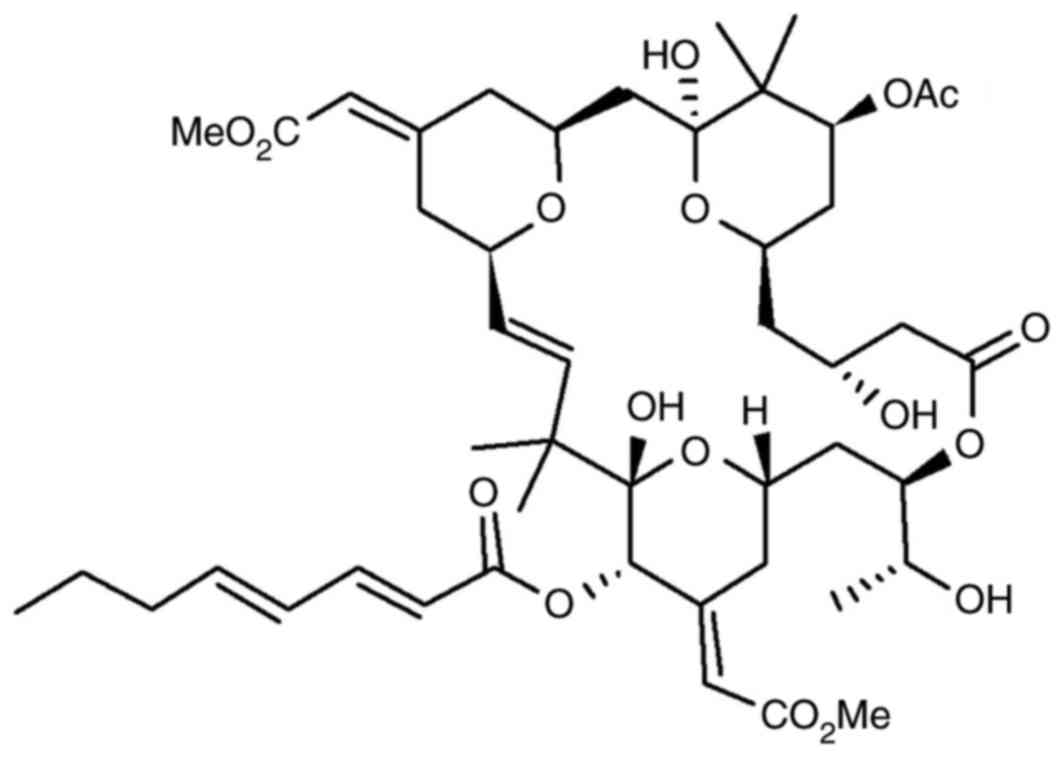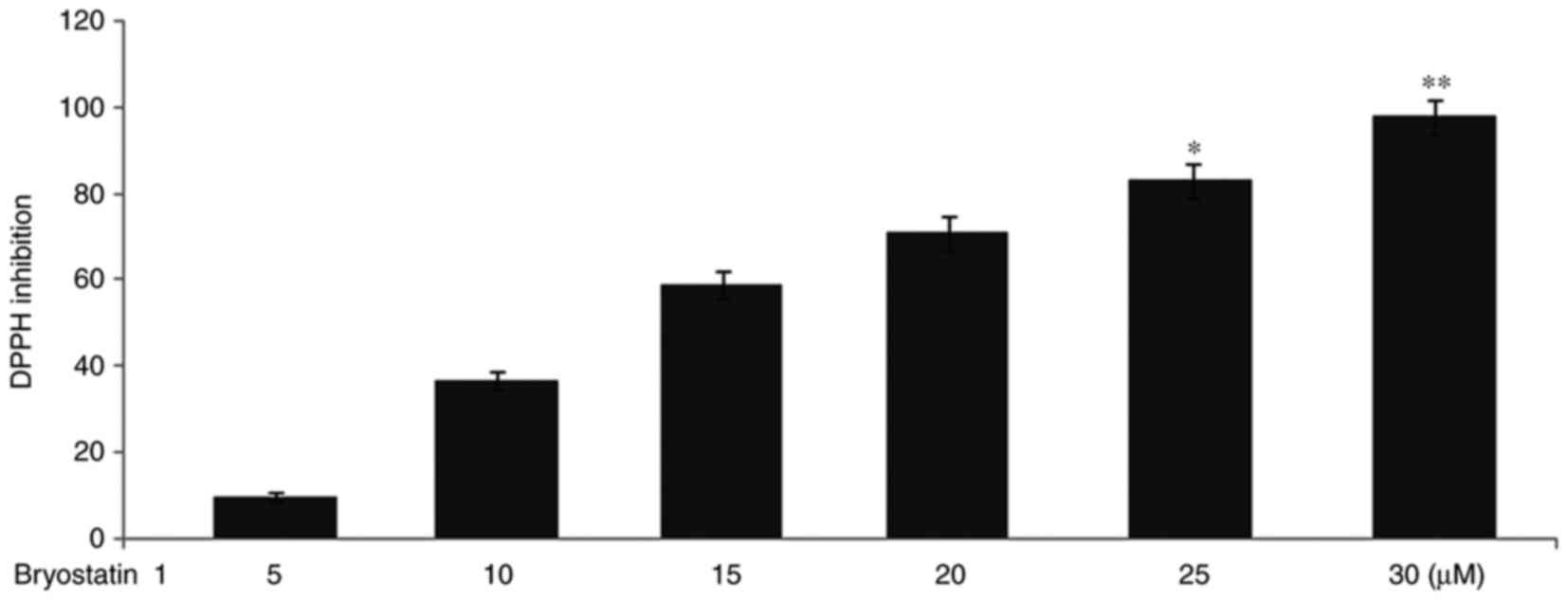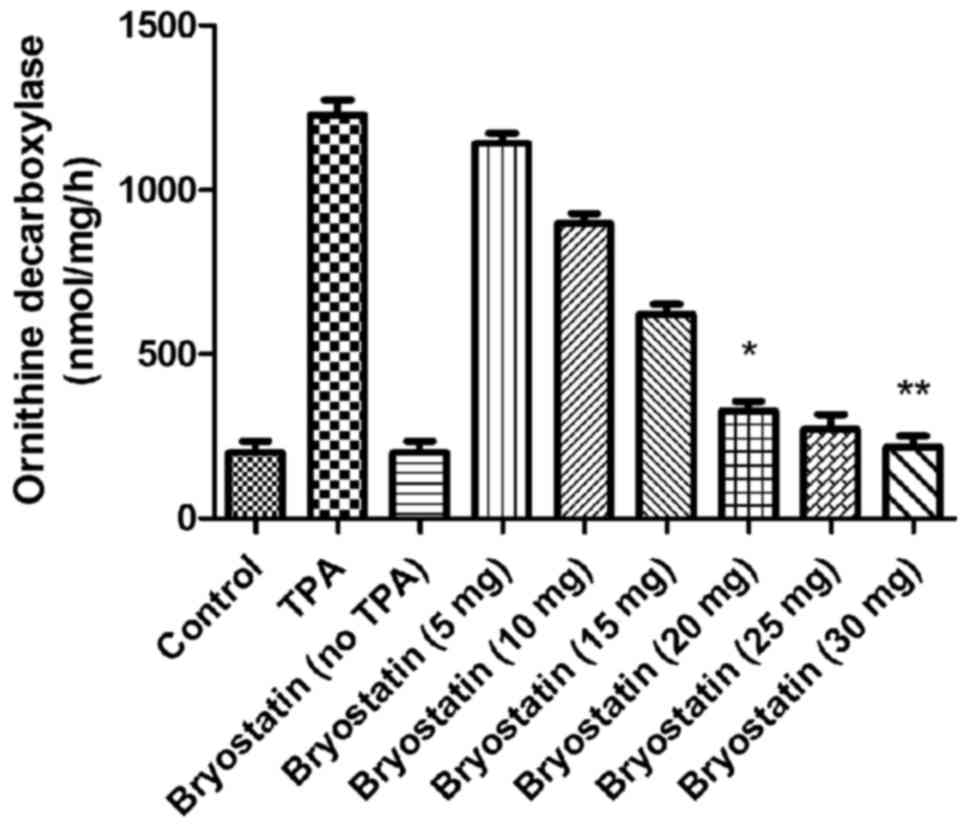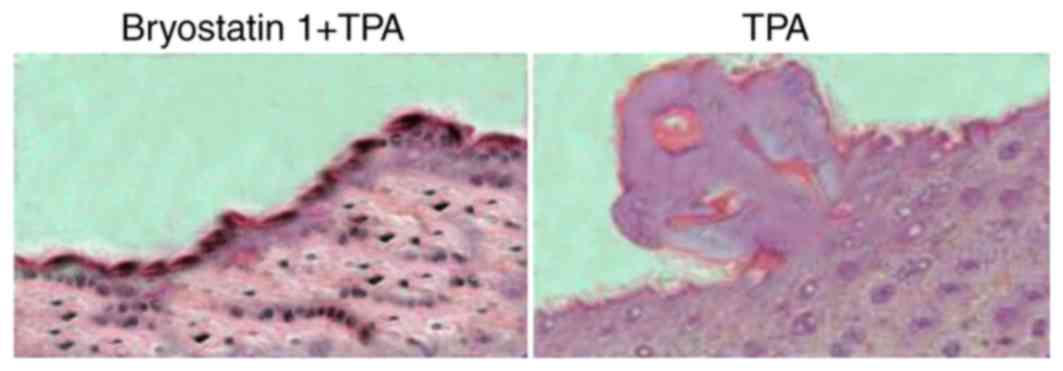|
1
|
Bishop JM: Molecular themes in on
cogenesis. Cell. 64:235–248. 1991. View Article : Google Scholar : PubMed/NCBI
|
|
2
|
Knudson AG: Hereditary predisposition to
cancer. Ann NY Acad Sci. 833:58–67. 1997. View Article : Google Scholar : PubMed/NCBI
|
|
3
|
Boutwell RK: Some biological aspects of
skin carcinogenisis. Prog Exp Tumor Res. 4:207–250. 1964.
View Article : Google Scholar : PubMed/NCBI
|
|
4
|
Slaga TJ: Cancer: Etiology, mechanisms,
and prevention – a summary. Carcinog Compr Surv. 5:243–262.
1980.PubMed/NCBI
|
|
5
|
DiGiovanni J: Multistage carcinogenesis in
mouse skin. Pharmacol Ther. 54:63–128. 1992. View Article : Google Scholar : PubMed/NCBI
|
|
6
|
Kim EJ, Park H, Kim J and Park JH:
3,3′-diindolylmethane suppresses
12-O-tetradecanoylphorbol-13-acetate-induced inflammation and tumor
promotion in mouse skin via the downregulation of inflammatory
mediators. Mol Carcinog. 49:672–683. 2010. View Article : Google Scholar : PubMed/NCBI
|
|
7
|
Budunova IV, Perez P, Vaden VR, Spiegelman
VS, Slaga TJ and Jorcano JL: Increased expression of p50-NF-kappaB
and constitutive activation of NF-kappaB transcription factors
during mouse skin carcinogenesis. Oncogene. 18:7423–7431. 1999.
View Article : Google Scholar : PubMed/NCBI
|
|
8
|
Przybyszewski J, Yaktine AL, Duysen E,
Blackwood D, Wang W, Au A and Birt DF: Inhibition of phorbol
ester-induced AP-1-DNA binding, c-Jun protein and c-jun mRNA by
dietary energy restriction is reversed by adrenalectomy in SENCAR
mouse epidermis. Carcinogenesis. 22:1421–1427. 2001. View Article : Google Scholar : PubMed/NCBI
|
|
9
|
Walaszek Z, Hanausek M and Slaga TJ:
Mechanisms of chemoprevention. Chest. 125 5 Suppl:128–133. 2004.
View Article : Google Scholar
|
|
10
|
De Flora S and Ferguson LR: Overview of
mechanisms of cancer chemopreventive agents. Mutat Res. 591:8–15.
2005. View Article : Google Scholar : PubMed/NCBI
|
|
11
|
Pettit GR, Herald CL, Doubek DL, Herald
DL, Arnold E and Clardy J: Isolation and structure of bryostatin 1.
J Am Chem Soc. 104:6846–6848. 1982. View Article : Google Scholar
|
|
12
|
May WS and Sensenbrenner LL: Stimulation
of stem cell growth by the bryostatins. US Patent 5358711 A. Filed
September 10, 1993; issued November 23, 1994.
|
|
13
|
Hennings H, Blumberg PM, Pettit GR, Herald
CL, Shores R and Yuspa SH: Bryostatin 1, an activator of protein
kinase C, inhibits tumour promotion by phorbol esters in SENCAR
mouse skin. Carcinogenesis. 8:1343–1346. 1987. View Article : Google Scholar : PubMed/NCBI
|
|
14
|
Dale IL and Gescher A: Effects of
activators of protein kinase C, including bryostatins 1 and 2 on
the growth of A549 human lung carcinoma cells. Int J Cancer.
43:158–163. 1989. View Article : Google Scholar : PubMed/NCBI
|
|
15
|
Krafft AS, William F, Pettit GR and Lilly
MB: Varied differentiation responses of human leukaemias to
bryostatin 1. Cancer Res. 49:1287–1293. 1989.PubMed/NCBI
|
|
16
|
Hornung RL, Pearson JW, Beckwith M and
Longo DL: Preclinical evaluation of bryostatin1 as an anticancer
agent against several murine tumour cell lines: in vitro versus in
vivo activity. Cancer Res. 52:101–107. 1992.PubMed/NCBI
|
|
17
|
Morgan MD: Oxidized polyamines and the
growth of human vascular endothelial cells. Prevention of cytotoxic
effects by selective acetylation. Biochem J. 242:347–352. 1987.
View Article : Google Scholar : PubMed/NCBI
|
|
18
|
Hussain SP, Hofseth LJ and Harris CC:
Radical cause of cancer. Nat Rev Cancer. 3:276–285. 2003.
View Article : Google Scholar : PubMed/NCBI
|
|
19
|
Prescott SM and Fitzpatrick FA:
Cyclooxygenase-2 and carcinogenesis. Biochim Biophys Acta.
1470:M69–M78. 2000.PubMed/NCBI
|
|
20
|
Trush MA, Egner PA and Kensler TW:
Myeloperoxidase as a biomarker of skin irritation and inflammation.
Food Chem Toxicol. 32:143–147. 1994. View Article : Google Scholar : PubMed/NCBI
|
|
21
|
Hamberg M and Samuelsson B: On the
mechanism of the biosynthesis of prostaglandins E-1 and F-1-alpha.
J Biol Chem. 242:5336–5343. 1967.PubMed/NCBI
|
|
22
|
Gately S: The contributions of
cyclooxygenase-2 to tumor angiogenesis. Cancer Metastasis Rev.
19:19–27. 2000. View Article : Google Scholar : PubMed/NCBI
|
|
23
|
Marton LJ and Pegg AE: Polyamines as
targets for therapeutic intervention. Annu Rev Pharmacol Toxicol.
35:55–91. 1995. View Article : Google Scholar : PubMed/NCBI
|
|
24
|
Chun KS, Keum YS, Han SS, Song YS, Kim SH
and Surh YJ: Curcumin inhibits phorbol ester-induced expression of
cyclooxygenase-2 in mouse skin through suppression of extracellular
signal-regulated kinase activity and NF-kappaB activation.
Carcinogenesis. 24:1515–1524. 2003. View Article : Google Scholar : PubMed/NCBI
|
|
25
|
Coussens LM and Werb Z: Inflammation and
cancer. Nature. 420:860–867. 2002. View Article : Google Scholar : PubMed/NCBI
|
|
26
|
Surh YJ: Molecular mechanisms of chemo
preventive effects of selected dietary and medicinal phenolic
substances. Mutat Res. 428:305–327. 1999. View Article : Google Scholar : PubMed/NCBI
|


















